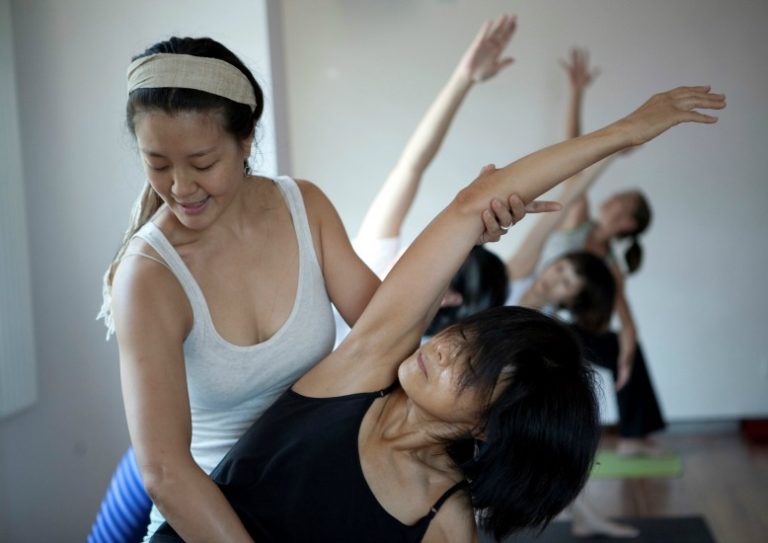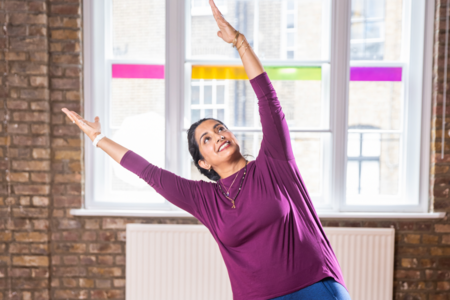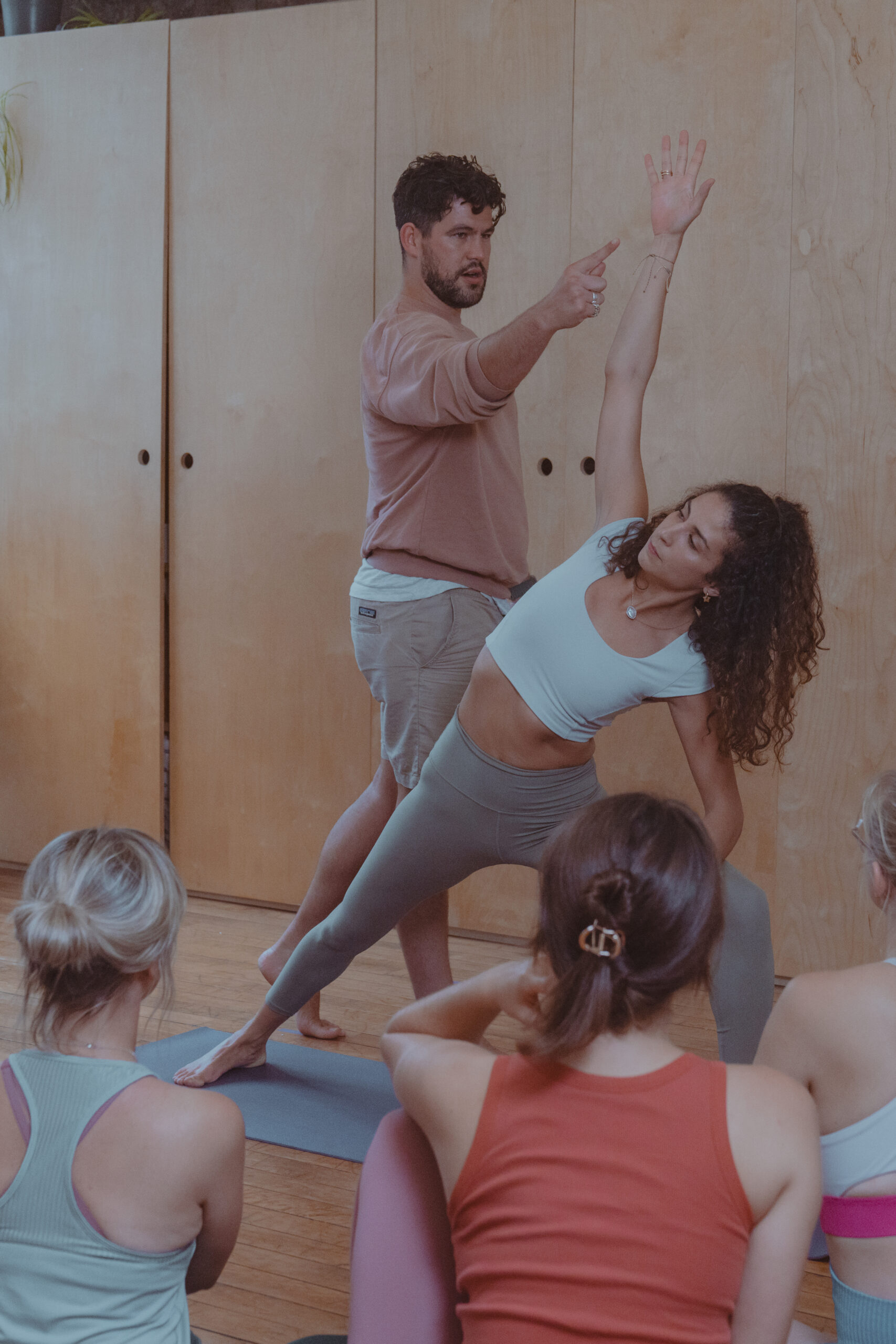Mimi Kuo-Deemer is leading a five-day Vinyasa flow teachers’ immersion in Camden this October 2019. Ahead of her training, we asked Mimi a few questions about her teaching style and how the immersion has evolved over the past six years. She shares details about her favourite part of the training as well as what is currently inspiring her own practice.
Vinyasa is among the most popular styles of yoga taught today with countless trainings taking place. Each teacher seems to bring a unique perspective to their teachings. How would you describe your approach?
Quite honestly, I’m not quite sure what other Vinyasa teachers are teaching, but for myself, my enquiry has always been how to make Vinyasa, which is a very new form of modern yoga, a practice that nevertheless respects, deepens and enriches some of the older traditions and principles within yoga.
For example, I am continually asking questions, such as ‘what sequencing or overarching narrative will help still and quieten the busy mind, which is how the Yoga Sutra of Patanjali describe yoga?’ Or ‘Is there a way to explore how Vinyasa flow can embody the notion of skill in action, as championed in the Bhaghavad Gita?’. I am also forever keen to understand how Vinyasa flow can affect the koṣas, or layers of our experience from physical, energetic, mental and emotional, wisdom and bliss. This process of enquiry is also my ‘lineage’ that has been passed down from Donna Farhi. Rather than having answers to everything, I encourage students to explore their understanding of things, and draw their own conclusions, and do as another of my teachers, Erich Schiffmann always says: ‘Look without knowing and see what you see’. This is also for me what the yoga is all about: seeing past our delusions, ignorance, misunderstandings and misconceptions about things to see the true nature of our experience.
Because Vinyasa flow is also reflective of today’s post lineage approach, it also allows for far more latitude in methodology. Throughout the years, I have evolved my practice to include Buddhist mindfulness and movement principles from qigong. I believe these help Vinyasa transform our yoga practice into a space for greater insight, wisdom, compassion. I also believe as a practice often associated with the word ‘flow’, we can create templates and design classes that allow us to step more into harmony with all that is around us. We can discover ways to move with less friction and jerkiness in body and mind, and more capacity to align with the fluid, changing nature of all experience.
Your Vinyasa flow teachers’ immersion has been running for six years now and each year we receive wonderful feedback from students. Has the immersion shifted at all over the years? If so, how have you tailored it for this year?
Each year the immersion’s content is slightly different, and about four years ago I thoroughly revamped it. It follows a course manual that has also been evolving and developing over the years. The emphasis remains the same throughout each course, though, which is to learn to practise and teach from a place of authenticity, embodiment and safety. The main difference this year is that I will be teaching the course over five consecutive days rather than six day spread over two weekends. I am hoping this way students can immerse more fully and taste an even more highly experiential flavour of Vinyasa’s magic.
Ideally, who is this immersion for?
Teachers or teachers in training who are looking for some inspiration in sequencing, language, developing narratives and themes, refining touch and finding creative freedom.
What do you hope your students will gain after your five days together?
This is a hard question! Based on feedback from past years, I believe students will gain confidence in their teachings, ways to understand and integrate useful anatomy, build foundations for new, inspiring and creative sequencing, understand the logic of putting sequences together, how to use effective language and how to give skilful adjustments in a flow-style setting. They will also experience the theory as an embodied practice and discover their inner teacher, which is what each of us probably most needs to teach with true presence and authenticity.
Do you have a favourite day within the immersion – one that you particularly look forward to teaching? If so, which day and why?
The very first day. I love the unknown, mysterious energy of working with a new group and seeing who is there. On the first day we also set the stage for the approach to learning, which is so important. For me, learning must be light, fun and deep. It is also about a willingness to make mistakes! Telling everyone that they have permission to and are even encouraged to make mistakes is wonderfully liberating for me and for everyone in the group.
Can you share a bit about what currently inspires your own practice?
I am delving deeply into a more internal martial arts, which is a form of qigong known as neigong, or neijia. The Chinese have had thousands of years of movement theory and practice. I find this informs my approach to yoga asana in profound and delightful ways. I am also working with pandiculation, which what our nervous system does to wake up our sensorimotor system and prepares us for more efficient movement. It’s a far better and safer alternative to passive stretching, and I am integrating this into the way we move and stretch the body in yoga asana.










